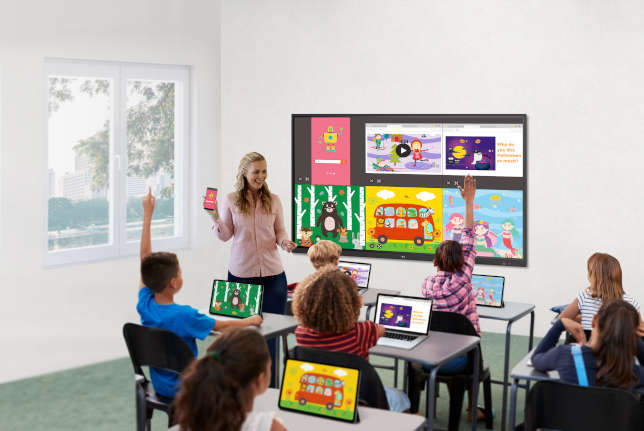LG Launches Interactive Classroom Displays
LG Business Solutions has launched a new series of interactive
classroom displays, the
TR3DJ series, available in sizes up to 86 inches.
The new displays are designed for broad compatibility and come with
Android 8.0 installed. According to LG, “The TR3DJ series displays
are designed to support virtually any application, content management
system, learning platform or online conferencing solution that a
school uses to engage students in-class and remotely.”

There are currently three models in the TR3DJ series — the 65-inch
65TR3DJ-B, 75-inch 75TR3DJ-B and 86-inch 86TR3DJ-B — each with
virtually identical specs, including:
-
3,840 x 2,160 (4K/UHD) resolution;
-
1,100-to-1 contract ratio;
-
350 cd/m² brightness, except for the 86-inch model, which is listed
at 330 cd/m²;
-
178-degree vertical and horizontal viewing angle;
-
16:9 aspect ratio;
-
8ms response time;
-
IR Multi touch point (maximum 20 points/maximum 10 writing);
-
Dual pen and dual color;
-
VESA mount compatibility;
-
Dual 12W speakers;
All of the models also offer:
-
OPS (Open Pluggable Specification) slot for
adding a computer module;
-
Bluetooth support;
-
ScreenShare Pro (for
showing up to six screen simultaneously);
-
AirClass, with
support for up to 30 students (polling,
Q&As and messaging).
Connectivity includes three HDMI in ports, one HDMI out port, optical
out, RGB, RS-232c, audio in/out, six USB 2.0 ports and three USB 3.0
ports. The models also offer USB Block Mode to “prevent copying
data to unauthorized devices.”
The displays come with a three-year warranty, “with extended
five-year coverage available through select LG dealers serving the
education market.” Further
details can be found at lg.com.